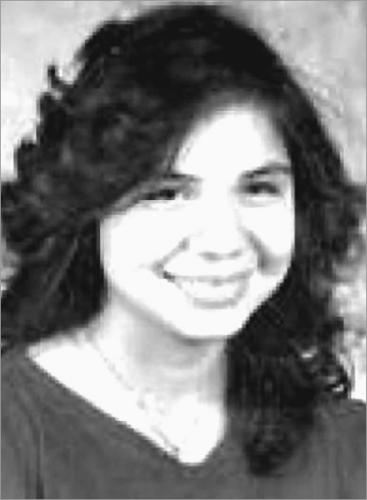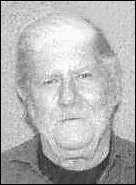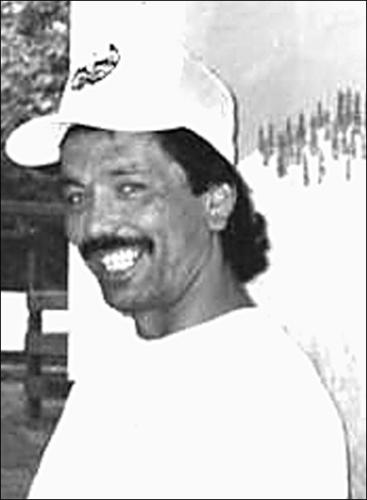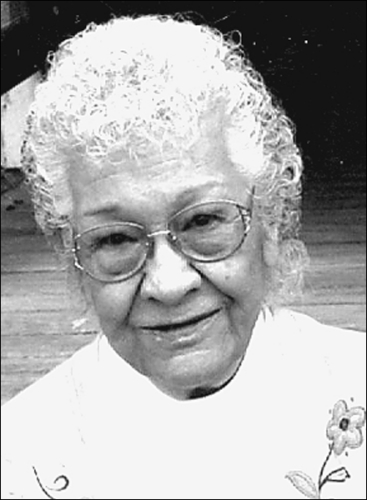Category: Obituaries
Richard S. Coles
Leroy Martin “Lee” Fryberg Jr.
Wendy Leigh Gobin-Young
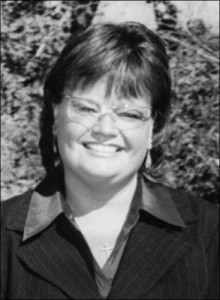 Wendy Leigh Gobin-Young, 52, passed away on October 16, 2013 in the comfort of her home surrounded by her family and friends after a courageous battle with multiple myeloma cancer.
Wendy Leigh Gobin-Young, 52, passed away on October 16, 2013 in the comfort of her home surrounded by her family and friends after a courageous battle with multiple myeloma cancer.Obituary: Anna M. Hatch
Obituary: Patricia Ann “Patty” Baker
 Patty was born December 30, 1973 to Marge Baker and Carl Rehder Jr. She entered into rest September 25, 2013. Patty graduated from Marysville-Pilchuck High School. She loved crocheting, knitting, embroidering, bowling and her little wiener dogs. She loved her nieces and nephews, and her favorite sister, Christy. Visitation will be held Sunday, September 29, 2013 at 1:00 p.m. at Schaefer-Shipman Funeral Home with an Interfaith service to follow at 6:00 p.m. at the Tulalip Tribal Gym. Funeral Services will be held Monday, September 30, 2013 at 10:00 a.m. at the Tulalip Tribal Gym with burial following at Mission Beach Cemetery. Arrangements entrusted to Schaefer-Shipman Funeral Home. – See more at: http://www.legacy.com/obituaries/heraldnet/obituary.aspx?n=patricia-ann-baker-patty&pid=167184945&fhid=2242#sthash.tnP1Dv0W.dpuf
Patty was born December 30, 1973 to Marge Baker and Carl Rehder Jr. She entered into rest September 25, 2013. Patty graduated from Marysville-Pilchuck High School. She loved crocheting, knitting, embroidering, bowling and her little wiener dogs. She loved her nieces and nephews, and her favorite sister, Christy. Visitation will be held Sunday, September 29, 2013 at 1:00 p.m. at Schaefer-Shipman Funeral Home with an Interfaith service to follow at 6:00 p.m. at the Tulalip Tribal Gym. Funeral Services will be held Monday, September 30, 2013 at 10:00 a.m. at the Tulalip Tribal Gym with burial following at Mission Beach Cemetery. Arrangements entrusted to Schaefer-Shipman Funeral Home. – See more at: http://www.legacy.com/obituaries/heraldnet/obituary.aspx?n=patricia-ann-baker-patty&pid=167184945&fhid=2242#sthash.tnP1Dv0W.dpufDorraine Frances Jones
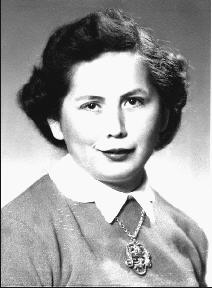 Dorraine Frances (Williams) Jones, 78, was born and raised on the Tulalip Indian Reservation. Her parents were Lawrence Charles Williams and Christina Fryberg of Tulalip. She passed away on August 22, 2013 at Everett, Washington.
Dorraine Frances (Williams) Jones, 78, was born and raised on the Tulalip Indian Reservation. Her parents were Lawrence Charles Williams and Christina Fryberg of Tulalip. She passed away on August 22, 2013 at Everett, Washington.
Dorraine was born to a fisherman and fished with her husband, “Breezer” on their boat the “Dorraine J.” She started her career with her dad beach seining, then fishing with Breezer, she also worked many years at the original Smoke Shop located by the dam on the reservation; and later in the first tribal health clinic as a Community Health Representative. She enjoyed her culture by harvesting cedar, cascara bark, berry picking, clam digging, canning and cooking for family events. She will be deeply missed by her family and friends.
Dorraine is survived by her son and daughters, Jimmy Jones (Kristy L.); Rae Anne (Mike) Gobin, Karen (Steve) Gobin; her grand-children, Justine Jones, Brent Cleveland (Sara E.), Ron Cleveland, Joshua Cleveland, Shelby Cleveland (Trever H.), Sonia Gobin (George S.), Steven Gobin Jr. (Chandra R.), Kevin (Laini Jones), Natosha Gobin (Thomas W.) and Jessica Jones; great-grandchildren, Brent Cleveland Jr., Evalynn Cleveland, Rosalie Cleveland, Stella Cleveland-Husein, Kylee Sohappy, Kira Sohappy, Koli Sohappy, Kaliyah Sohappy, Aleesia Gobin, Eian Williams, Wakiza Gobin, Florence Gobin, Eliana Gobin, Jet L. Jones, Ava D. Jones, KC Hots, Kane Hots, Katie Hots, Aloisius Williams and Aiden E. Mather; her sister, Jane Wright; brothers, Herman Williams Sr., Clyde (Maxine) Williams Sr., Arley Williams, Charlene Williams, nephews; Frank (Michaela) Wright, Lawrence (Kim) Wright, Herman Williams Jr., Andy Williams; Alan (Arnele) Williams, Clyde Williams Jr., Gene (Julie) Williams; Lance Williams; Brian Jones Sr. and Brian “Bubbas” Jones Jr., nieces, Christine (Dean) Henry, Deb (Joe) Peterson, Illa Wright, Leilani Davey, Charlotte Williams, Janet Williams, Gail Williams, Felicia (Sugar) Jones, Chris Jones; and many other great nieces and nephews.
Dorraine was preceded in death by her husband, Ralph D. Jones Jr.; parents, Lawrence and Christina (Daisy) Williams; parents-in-law, Ralph and Edith Jones, Lena Harrison; her sons, Kevin O. Jones, Ralph D. Jones III; her grandson, Nathan D. Cleveland; her sister-in-law, Genevieve Williams; brother-in-laws, Darrel R. Jones, Frank Wright; and nephew, Greg Williams.
The family wishes to extend their gratitude to the Everett Providence Hospital for their support in her final days. A special thank you to mom’s caretakers, Jimmy, Kristy, Justine, Brian “Bubba” and Chasity who were there for her night and day for the many years that she had been ill.
The Viewing will take place at 1:00 p.m. on Tuesday August 27, 2013 at Schaefer-Shipman Funeral Home in Marysville. An Interfaith Service to celebrate Dorraine’s life will be held at 6:00 p.m. on August 27, 2013 at her home. Funeral Services to be held at 10:00 a.m. on Wednesday August 28, 2013 at the Tulalip Tribes Gym followed by burial service at the Mission Beach Cemetery.
Matthew Allen Crawford
 Matthew Allen Crawford, 26, entered into rest on August 21, 2013.
Matthew Allen Crawford, 26, entered into rest on August 21, 2013.
He was born November 30, 1986 in Everett, Washington to Cyrina Williams and Troy Crawford.
He will be missed dearly by his mother, Cyrina; lil’ sister, Angelique Williams; brother, James John; his sisters, June DeFresne, Marjorie McDaniel; brother-in-law, Josh McDaniel; nephew, Logan McDaniel; father, Troy; grandparents, Cyrus and Thelma Williams; uncle, Timothy Williams; aunties, Terri, Lynda, Leslie, Jamie-Bagley; Auntie, Melodie McNab, Cindy Crawford; and step-father, Henry DuFresne; numerous cousins in Tulalip, Tacoma and Canada; and many friends of Bill W. and also of N.A. meetings in the Marysville and Tulalip area.
Matthew loved life, he had some troubles but he turned his life around and got his GED, Driver’s License, graduated from carpentry training and become a certified diver on July 26, 2013. He worked for the Tulalip Tribes in custodial maintenance which he loved to go to work. He was clean and sober for over a year.
A visitation will be held Monday, August 26, 2013 at 1:00 p,m. at Schaefer-Shipman Funeral Home with an Interfaith service following at 6 p.m. at the Tulalip Gym.
Funeral Services will be held Tuesday, August 27, 2013 at 10:00 a.m. at the Tulalip Gym with burial following at Mission Beach Cemetery.
Arrangements entrusted to Schaefer-Shipman Funeral Home.
Lillian Marie Williams
Lillian Marie Williams
Lillian Marie Williams, 48, of Tulalip, Washington went to be with her Creator on August 8, 2013.
She was born April 16, 1965 in Bellingham, WA to Walter Williams Jr. and Loretta Tom.
Lillian worked as a Youth Advocate at the Los Angeles Indian Youth Center for five years. She traveled with Bobby Labonty and Dale Ernhart in NASCAR circuit. She was active in her native culture.
She is survived by her fiance, Charles Comenote; mother, Loretta Tom; father, Walter Williams Jr.; children, Frances George, Brandon George, and Irvin Jack, Alannah Thiefault; step-children, Tonya Comenote, Kealynn Comenote, Charles Comenote Jr; siblings, William Washington III, Crystal Bailey, Robert Williams, Esther John, Ernest John III, Leonard Lawrence, Jack Johnson; fourteen grandchildren; and numerous nieces, nephews, cousins and friends.
Visitation will be held Wednesday, August 14, 2013 at1:00 p.m. at Schaefer-Shipman Funeral Home with an Interfaith Service following at 6 p.m. at the Tulalip Gym. Funeral Services will be held Thursday, August 15, 2013 at 10 a.m. at the Tulalip Gym with burial following at Mission Beach Cemetery.
Arrangements entrusted to Schaefer-Shipman Funeral Home.
Lateesha “Teesha” Mae Jack
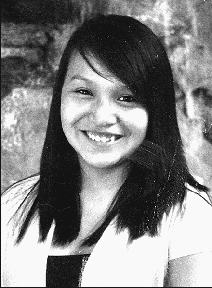 Lateesha “Teesha” Mae Jack, 21, passed away August 5, 2013.
Lateesha “Teesha” Mae Jack, 21, passed away August 5, 2013.
She was born April 12, 1992 in Everett, WA to Rainey Jack Sr. and Roseanne Iukes. She graduated from Tulalip Heritage High School. She loved playing Call of Duty, and basketball.
She is survived by her parents, Rainey Jack Sr., Roseanne Iukes; siblings, Veronica Iukes, Jennifer Flores, Jesse Wolf-John, Loreal Jack, Rainey Jack Jr., Terrell Jack; her daughter, Maliya Henry; grandparents, Mary Jack, Geraldine and Hank Williams, Nelson and Jennifer Iukes; numerous, aunties, uncles, nephews, nieces, cousins, and friends.
She was preceded in death by brother, James Titus Jack; grandfather, Windy Jack; uncles, Harvey Jack, Harold Enick and Gerald Enick.
A prayer services will be held Sunday, August 11, 2013 at 1 p.m. at Schaefer-Shipman Funeral Home with an Interfaith Service following at the Tulalip Gym at 6 p.m.. Funeral Services will be held Monday, August 12, 2013 at 10 a.m. at the Tulalip Gym with burial following at Mission Beach Cemetery.
Arrangements entrusted to Schaefer-Shipman. Marysville.

